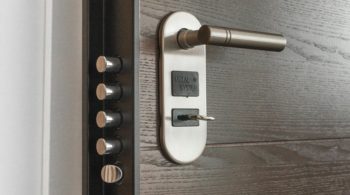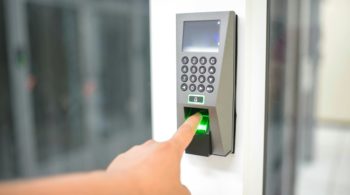You want a smart thermostat that saves energy without sacrificing comfort. Choosing the right one means understanding features like learning algorithms, compatibility with your HVAC system, and how it integrates with your smart home setup. Some models offer advanced scheduling and remote control, while others focus on budget-friendly basics. Knowing which features matter most can help you make a decision that fits your home’s needs and energy goals. But how do these options compare in real-world use?
Top Smart Thermostats for 2025
Wondering which smart thermostat will best suit your home in 2025? You’ll find several options designed to meet diverse user preferences while embracing future technology.
The Ecobee Smart Thermostat Premium offers advanced energy-saving and multi-room control.
Nest Learning Thermostat adapts to your habits with eco modes for efficient heating and cooling.
Amazon’s Smart Thermostat provides basic smart features at a budget-friendly price, integrating seamlessly with Alexa.
Additionally, Ecobee Essential balances simplicity and efficiency for users focused on straightforward energy management.
Features That Define a Smart Thermostat
Although smart thermostats come in various models, they share several key features that define their energy-saving capabilities. You’ll find Wi-Fi connectivity allowing remote control through apps, which enhances your energy management capabilities.
Many smart thermostat features include learning your schedule, adjusting heating and cooling automatically. Geofencing detects when you leave home, lowering energy use.
Advanced models add motion detection and humidity sensors to optimize comfort and efficiency. Plus, compatibility with platforms like Alexa and Google Assistant offers easy voice control.
These features combine to give you precise control and smarter energy use in your home.
Energy Savings and Environmental Impact
When you install a smart thermostat, you can cut your energy use by up to 23% each year, which leads to noticeable savings on your heating and cooling bills.
These devices help reduce energy consumption by adjusting temperatures when you’re away or asleep through features like geofencing and auto-away modes.
ENERGY STAR certified models offer verified energy savings, supporting environmental sustainability. Monthly reports let you track and optimize your usage, making it easier to live sustainably.
Compatibility With Home Heating and Cooling Systems
Since smart thermostats work with many types of heating and cooling systems, you’ll want to check your current setup before purchasing one.
Most models suit low voltage systems, but some require C wire requirements to maintain power and full functionality. If your system lacks a C wire, certain thermostats still operate but may limit features.
For high voltage compatibility, like 120V systems, you’ll need a thermostat designed specifically for that power type.
Confirming compatibility with your existing equipment guarantees smooth installation and peak performance, helping you maximize energy efficiency and comfort in your home.
Integration With Smart Home Devices and Voice Assistants
You can control your smart thermostat using popular voice assistants like Amazon Alexa, Google Assistant, or Apple HomeKit, making temperature adjustments quick and hands-free.
These thermostats also connect smoothly with other smart home devices, letting you automate your environment for better energy savings.
Voice Assistant Compatibility
How easily can you control your home’s temperature with just your voice? Many smart thermostats, like Nest and Ecobee, offer voice command functionality through Amazon Alexa, Google Assistant, and Apple HomeKit.
Ecobee even has built-in Alexa, so you don’t need another device to adjust settings or get updates. This hands free convenience means you can change your thermostat while cooking or relaxing, without lifting a finger.
Just speak your commands to fine-tune temperatures instantly. Before buying, check if your preferred thermostat supports your voice assistant to guarantee smooth, effortless control that fits your daily routine.
Smart Home Integration
Voice control is just one part of how smart thermostats fit into your home’s larger ecosystem.
These devices integrate smoothly with popular smart home ecosystems like Amazon Alexa, Google Assistant, and Apple HomeKit, enhancing your user experience by letting you manage temperature through voice or app.
Some models, like Ecobee, include built-in voice assistants for direct interaction without extra gadgets.
Features such as geofencing and compatibility with external sensors optimize comfort and energy savings by adjusting settings based on your location or room use.
This seamless integration offers you remote control and valuable insights to fine-tune your home’s efficiency.
Installation Requirements and Tips
Several installation factors can affect how smoothly your smart thermostat setup goes, especially when dealing with older HVAC systems.
Installation challenges often arise if your home lacks a C (common) wire, which supplies constant power. Before removing your old thermostat, take a clear photo of the wiring to guide you during installation.
Many models include detailed instructions and installation kits that make the process easier. Check compatibility with your heating and cooling setup before buying.
If you’re tackling this yourself, use these DIY tips to avoid common mistakes and guarantee your new thermostat works efficiently right from the start.
Utility Rebates and Certification Benefits
You’ll want to look for smart thermostats with ENERGY STAR certification since they meet strict energy efficiency standards and can qualify you for utility rebates.
These rebates often lower your initial cost by $50 or more, but availability depends on your location and heating type.
To maximize your savings, always check the certification status and local rebate programs before you buy.
ENERGY STAR Certification Importance
One key advantage of choosing a smart thermostat with ENERGY STAR certification is the combination of verified energy efficiency and potential financial savings.
This certification means your thermostat meets strict guidelines, ensuring it uses less energy while maintaining comfort. By selecting an ENERGY STAR model, you support sustainable living through reduced greenhouse gas emissions.
These thermostats undergo rigorous testing, so you can trust their performance. Plus, many provide monthly energy reports, helping you track and optimize usage.
Choosing certified products not only lowers your utility bills but also contributes to a greener, more energy-efficient home.
Available Utility Rebates
Many utility companies encourage energy savings by offering rebates when you buy ENERGY STAR certified smart thermostats.
These rebates can vary, sometimes reaching up to $50, depending on your location. To secure rebate eligibility, you’ll need to install the thermostat in a home using natural gas or electric heating.
Before purchasing, it’s essential to perform certification verification to confirm your chosen model qualifies. Checking your local utility’s rebate program details helps you understand specific requirements.
Maximizing Rebate Eligibility
Although qualifying for utility rebates on smart thermostats can seem complex, understanding the key requirements helps you maximize your savings.
To boost rebate eligibility, focus on these purchase considerations:
- Choose ENERGY STAR certified models from trusted brands like NEST, ecobee, or Carrier/Bryant.
- Confirm compatibility with your home’s heating and cooling systems.
- Verify local utility rebate programs and their specific requirements before buying.
- Take advantage of instant rebates, which can reduce costs by up to $50.
Choosing the Right Smart Thermostat for Your Home
How do you pick the best smart thermostat for your home? Start by checking compatibility with your heating and cooling systems, especially if you need a C wire for power.
Explore thermostat brands that use smart technology, like Nest, which learns your schedule to save energy. Look for features such as geofencing and presence detection to adjust temperatures when you’re away.
Guarantee the model is ENERGY STAR certified to help with rebates. Finally, consider installation—some thermostats include power extender kits, while others might need a professional.
Choosing wisely guarantees comfort, savings, and efficient energy use throughout your home.
Frequently Asked Questions
How Do Smart Thermostats Handle Power Outages?
Smart thermostats usually switch to battery backup during power outages, keeping basic functions alive. Once power restoration occurs, they automatically reconnect to Wi-Fi and resume your programmed settings, ensuring comfort without manual resets.
Can Smart Thermostats Learn Preferences for Multiple Users?
Yes, smart thermostats can learn user preferences by creating multiple user profiles. This way, each person’s comfort settings get saved and adjusted automatically, so you and others enjoy personalized temperature control effortlessly.
What Privacy Measures Protect User Data on Smart Thermostats?
Smart thermostats protect your data using encryption, ensuring information stays secure during transmission and storage. They also require your consent before collecting or sharing data, giving you control over your privacy and personal information.
How Often Should Smart Thermostat Firmware Be Updated?
You should install firmware updates as soon as they’re available to guarantee peak performance and security. Regular software maintenance keeps your smart thermostat running smoothly and protects your system from vulnerabilities and bugs.
Are Smart Thermostats Compatible With Geothermal Heating Systems?
Yes, many smart thermostats offer geothermal compatibility, letting you optimize heating efficiency. You’ll want to check specific models to guarantee they support your system, so you can enjoy precise control and energy savings.
Christina Pulluck helped bring Nebula Electronics from a a science and tech decision forum to a full-fledged news site by creating a new design and branding. She continues to assist in keeping the site responsive and well organized for the readers. As a contributor to Nebula Electronics, Christina mainly covers mobile news and gadgets.







